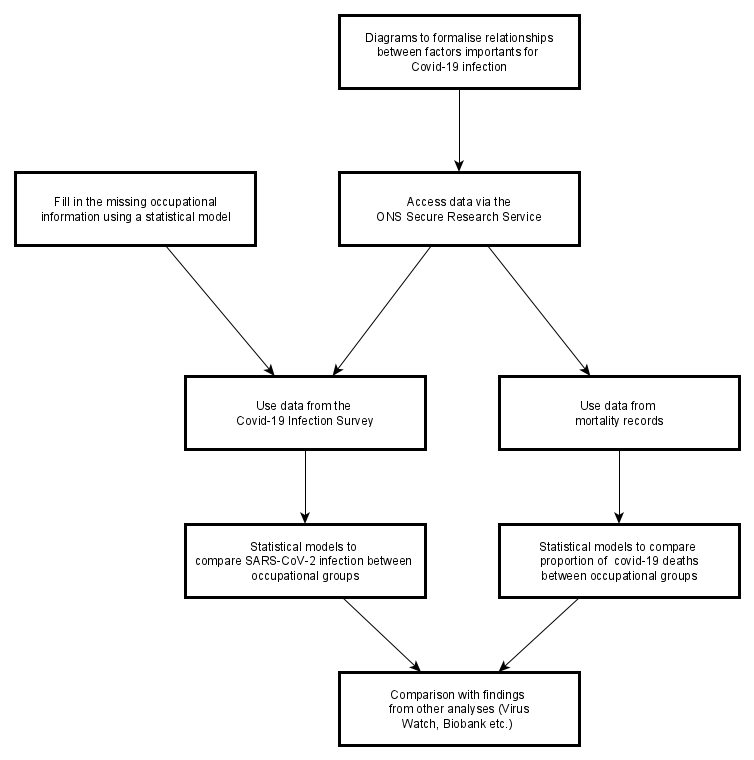Analysis of National Data on Infection and Mortality

The main objective was to carry out complementary statistical analyses of available data sources to improve our understanding of the role of occupation in the risk of infection and mortality. We have harmonised data and model decisions to help with comparisons. Analyses have been updated periodically to reflect changes in the dominant variant, vaccination status and use of non-pharmaceutical interventions. The analyses were initiated in April 2021 and will be completed by December 2022.

IOM are working on the analyses in collaboration with University of Manchester, London School of Hygiene and Tropical Medicine and Office for National Statistics.
Publications:
Cherrie M, Rhodes S, Wilkinson J, Mueller W, Nafilyan V, Van Tongeren M, et al. Longitudinal changes in proportionate mortality due to COVID-19 by occupation in England and Wales. Scandinavian Journal of Work, Environment & Health. 2022;(8):611-20. doi: 10.5271/sjweh.4048. (Available here).
Rhodes S, Wilkinson J, Pearce N, Mueller W, Cherrie M, Stocking K, Gittins M, Katikireddi SV, Tongeren MV. 2022. Occupational differences in SARS-CoV-2 infection: analysis of the UK ONS COVID-19 infection survey. Journal of Epidemiology and Community Health. 76(10):841-846. (Available here).
Rhodes S, Beale S, Wilkinson J, van Veldhoven K, Basinas I, Mueller W, Oude Hengel KM, Burdorf A, Peters S, Stokholm ZA et al. 2022. Exploring the relationship between job characteristics and infection: Application of a COVID-19 job exposure matrix to SARS-CoV-2 infection data in the United Kingdom. Scand J Work Environ Health. eng. (Available here).
Wilkinson J, Beale S, Cherrie M, Edge R, Fishwick D, Gittins M, et al. Directed acyclic graphs for the study of effects of occupation on risk of COVID-19-related outcomes. 2021. (Available here).
This study sits under theme 3 as part of the PROTECT Covid-19 National Core Study. To find out more click here.
